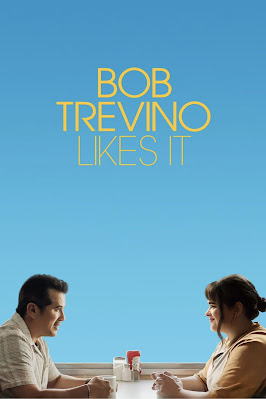Playing in Theaters
Sports movies can have a tendency to blend into one another in terms of formula and presentation; it takes a true visionary and a strong sense of commitment to an idea to stand out from the crowd. Such a feat requires a sense of childlike awe combined with a healthy dose of hard-earned wisdom to successfully wow an audience and potentially inspire a generation. F1: The Movie, despite overstaying its welcome just a little bit with a longer-than-likely-needed runtime, delivers the goods in spades with the added bonus of good old-fashioned heart rarely seen in modern blockbusters today. Sure, it's a classic story about older has-beens seeking one last shot at glory, budding heads with a younger rival, and all the drama that entails. Still, it's the best possible execution of that classic story anyone could ask for. In an age of over-commercialization, this kind of experience is needed more often than we might have realized.
The story follows Sonny Hayes (Brad Pitt), a washed-up former Formula One driver who spends his days living in his van, driving in whatever kind of racing event will hire him. One day, he's approached by his old racing partner and friend, Ruben (Javier Bardem), with an offer to race in Formula One again, with a catch. It seems Ruben's team is not in sync with each other as well as they should be, not helped by their star driver, a young, cocky, and ambitious kid named Josh (Damson Idris), who has talent but needs proper guidance to find his footing. Ruben wants Sonny to help shape up the team and secure a win, and in the process, give Sonny another chance at the glory he never experienced before. Despite Sonny's initial reluctance due to a past traumatic event, he takes on the challenge and joins the team. Whether he will succeed in better bringing the team together, and possibly help himself in the process, remains to be seen on the track.
As I said, sports movie narratives can be easily interchangeable in terms of beats, character arcs, and formula (no pun intended), and this movie is no exception. It may feature many of the hallmarks you might expect from a racing movie, especially one that isn't part of the Fast & Furious franchise. Even so, this movie is a prime example of taking familiar beats and remixing them into something that still feels fresh and, more importantly, tangible.
The film succeeds in taking you on a ride, both literally and metaphorically, with genuinely likable characters, relatable stakes, and sound old-fashioned, hard-earned wisdom for the younger crowd who desperately needs a little kick to better understand the world around them.
Brad Pitt, as usual, delivers a performance that showcases his continued progress as an actor while maintaining his sense of coolness and suave screen presence. Helped along by the unusual notion that Brad Pitt is one of those rare Hollywood individuals who, much like his character in David Fincher's The Curious Case of Benjamin Button, appears to be aging in reverse (seriously, how is this dude in his 60s?) His chemistry with the rest of the cast, especially with Dasmon Idris as the younger racer, is phenomenal to watch.
For my money, the MVP award goes to Javier Bardem for playing the best kind of best friend you didn't know you wanted to see in a movie. I would gladly have a beer with this guy!
While the narrative aspects of the film are stunning, the technical aspects are significantly more impressive.
While special effects were likely still utilized to some degree, the majority of the racing and car driving was done practically. Utilizing specially designed cameras that can be mounted almost anywhere, we're treated to a stunning array of POV shots from the cars, which get in close to the action. What's more, the photography and the editing, minus a few scenes here and there, never feel incoherent or hyperactive. Fast-paced does describe the general feel of the racing scenes, but they're never a struggle to watch.
I opted to see this film in D-BOX, and it genuinely enhanced the experience. For those unfamiliar, D-BOX is a seating option for movie theaters that utilizes a motor and an axis, allowing for a reasonable amount of movement and rumble in sync with the on-screen action. F1 is the perfect movie for this seating option, adding a layer of immersion that, while not necessary given the already incredible quality of the film, does enhance the experience and provides a little extra appreciation.
F1: The Movie is an unexpected gem of a film. It provides the kind of wholehearted, life-affirming feeling that movies like this are meant to evoke. While it might have benefited from having a few minutes shaved off the running time, I never felt as though my time was being wasted.
If you can spare the time, go see this movie, and please treat yourself to a D-BOX showing; you can control the amount of movement and rumble the seats provide.
Ladies & gentlemen, I am TheNorm; thank you all for reading.















